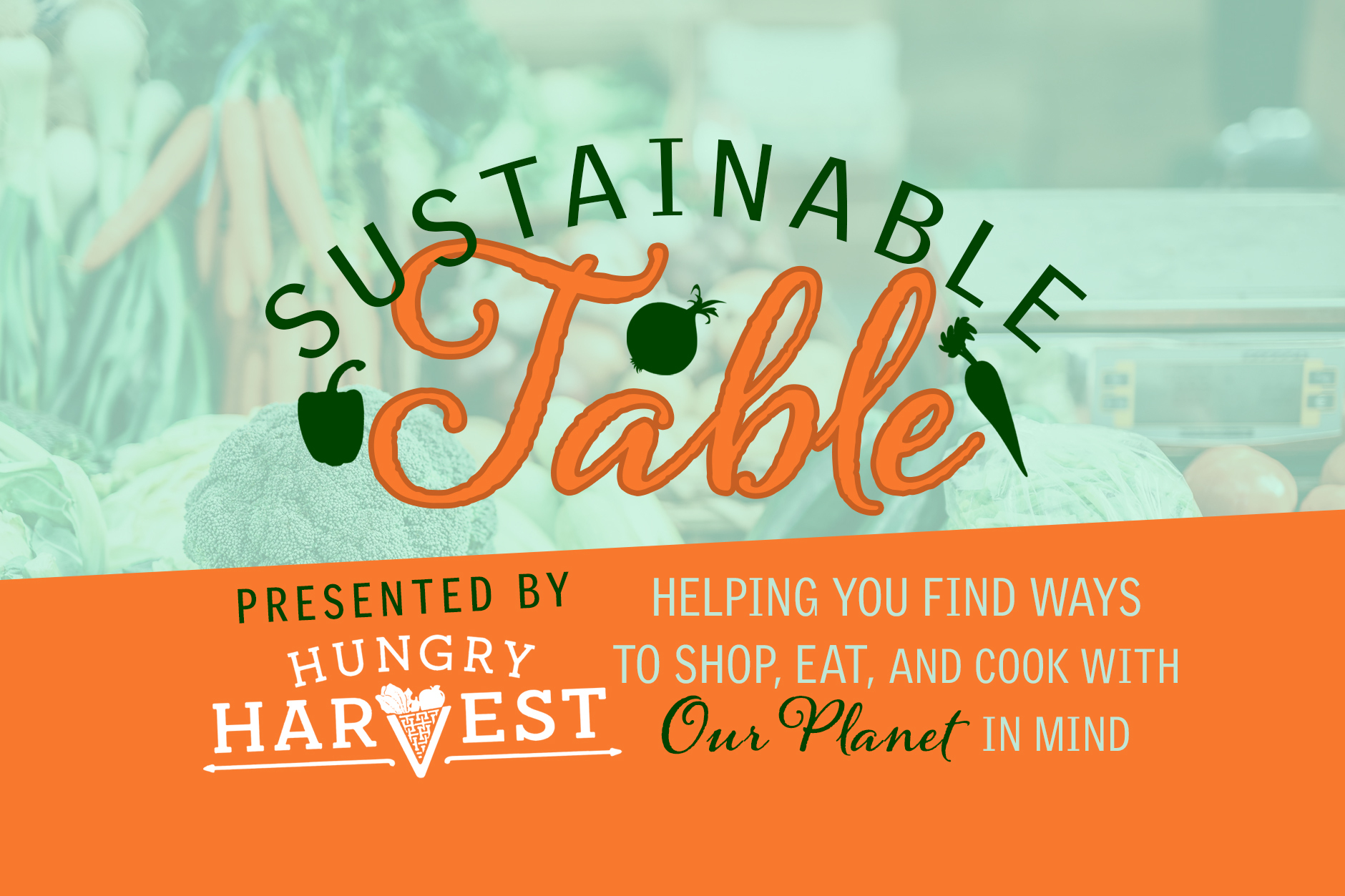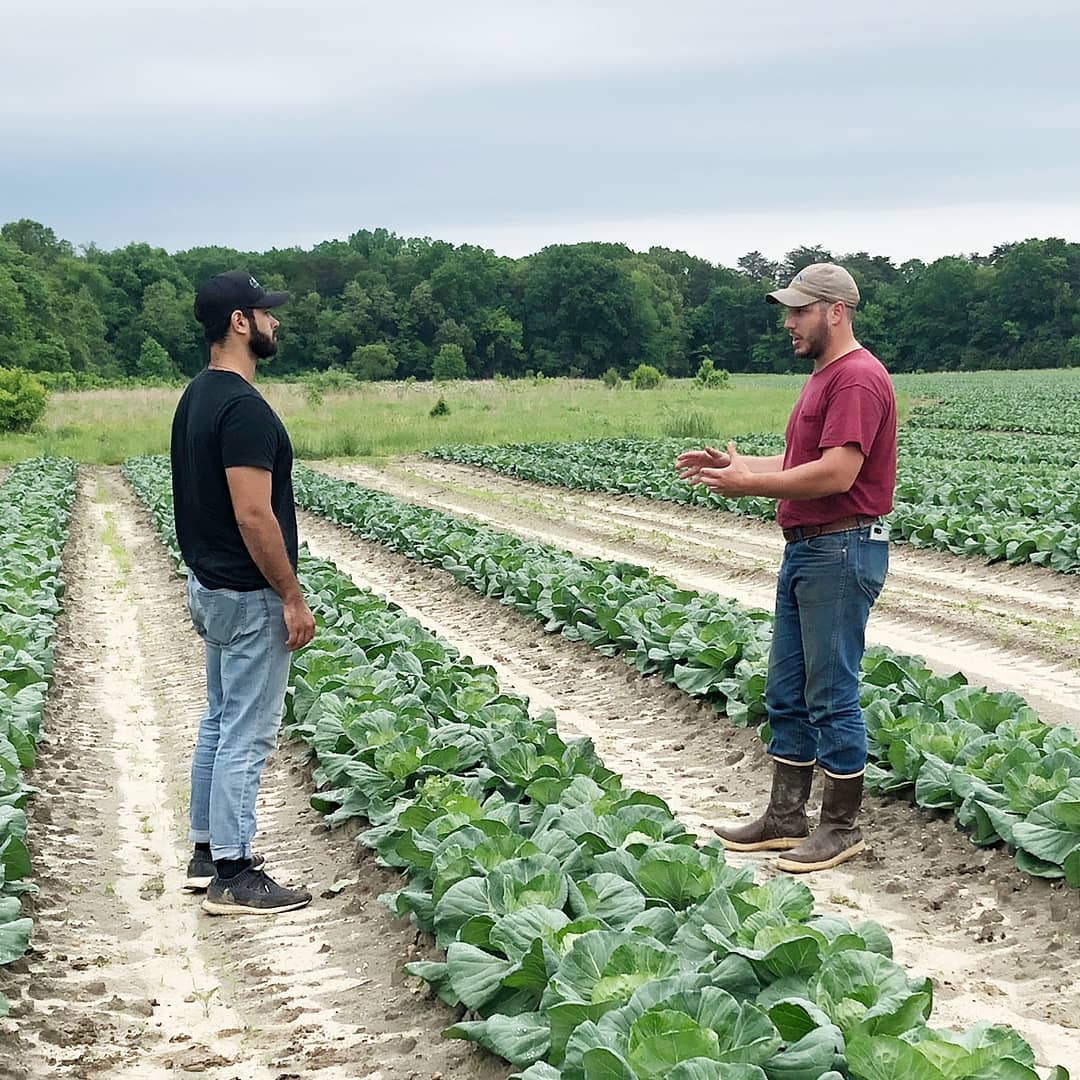
Did you know cabbage can get rejected from grocery stores if they have the “wrong number” of outer leaves showing? Or that bell peppers are sent back for not being able to stand up straight?
Cabbage and bell peppers are a small part of a larger story about “ugly” or “rescued” produce and food waste. “Grocery stores will often reject items that don’t meet their strict criteria for size, shape, color, and/or general surface appearance,” according to Andrew Pinney, who works locally in procurement for Hungry Harvest, a delivery service that deals exclusively with this type of produce. These criteria exist because consumers are more likely to purchase perfect looking produce from plentiful looking displays – when’s the last time you picked the last remaining item on a shelf, or the lopsided bell pepper over the perfect one? Retailers know this and stock their shelves accordingly.
Unfortunately, these rejections due to solely aesthetic criteria mean a significant amount of produce in developed countries goes uneaten. The Natural Resources Defense Council places this estimate as high as 40% in the United States, which equates to an estimated total of 60 million TONS of produce that goes to waste each year. This is a staggering number, especially when considering that U.S. farming accounts for 80% of all freshwater consumed and 10% of the total U.S. Energy Budget. Over the past few years, a new group of start-ups have popped up with the intention of rescuing and distributing this produce. Among them is Hungry Harvest, which has a local operation based in Raleigh and works directly with distributors and local growers.
These aesthetic qualifications only account for looks and typically have no bearing on taste or quality. Andrew notes that rescued-produce programs understand that quality and rescuing food that would otherwise go to waste should never be mutually exclusive. They are careful to ensure they only receive and deliver high quality produce.
For farmers, these food recovery services provide an opportunity to sell their entire harvest for a fair price, including items that would be rejected by grocery stores or are simply surplus and would have gone to waste. Pinney explains, “We work with growers to make sure they get a fair return for their work while providing fresh, healthy produce at a value for our customers.”
Hungry Harvest’s food rescue efforts are not only a story of sustainability but also of reducing food insecurity. They use their ability to rescue produce along with proceeds from their subscription boxes to support donations to pandemic relief deliveries that help food insecure neighborhoods.
A 2009 U.S. Department of Agriculture Report found that more than 20 million Americans live in “food deserts” – areas lacking meaningful access to affordable, quality fresh foods. These produce distribution programs give many farmers an opportunity to reach people who might not otherwise have access to healthy options, whether due to financial or geographic boundaries. Since opening, Hungry Harvest has provided access to 1.7 million pounds of produce through reduced-cost markets and donations to people in need, including working with local organizations PORCH and the Chapel Hill-Carrboro school system during COVID.
Produce rescue programs provide an opportunity to take steps towards greater sustainability – by utilizing food that would otherwise go to waste, and that requires significant energy and resources to produce. They offer consumers an important option to do good with their grocery dollars by protecting the planet, farmers, and their local community with their purchase.
For more information or to check out what Hungry Harvest has to offer, head over to hungryharvest.net. Use code CH50 for half off your first harvest.







